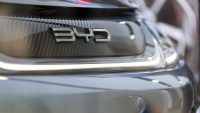No-one would deny 2020 has been a bumper year for used cars, both in terms of prices and demand.
At the height of the first national lockdown, there were numerous reports from Car Dealer readers that not only were traders having to pay more for stock, but getting hold of it in the first place was a struggle too.
Dealers were fighting among themselves for the best quality sub-£10,000 cars and sales of petrol and diesel cars spiked, while hybrids and electric cars stuttered.
Customers were turning to used cars out of fear of using public transport or to cheer themselves up in a year of no exotic family holidays.
But with various restrictions placed on Brits since the first lockdown, including a ‘firebreak’ shutdown in Wales to a full four-week lockdown in England, what’s happening to the used car market now?
Is demand going up? Is the demand similar to the first national lockdown? Are we seeing the same trends we saw in lockdown 1?
And what about prices? Are they remaining stable or starting to soften? Are they still above what would be expected at this time of year?
We put those questions to a range of experts in the motor trade – here’s what they had to say.
- Join Car Dealer and get more out of our website here
Used car market still ‘very active’
Cap HPI head of valuations Derren Martin
Retail sales appear to be at between 40-60 per cent of normal November’s level, which we see as a positive considering it is click & collect only. Wholesale demand since lockdown is also positive – volumes are only around 15 per cent down on October, pre-lockdown being announced.
It is a very different lockdown to the one that started in March. Car dealers and auctions are generally well established to buy and sell online now, either via click & collect/safe collections or deliveries and as a result the used car market is still very active.
With businesses using the furlough system, they can profitably operate by selling less cars than normal due to these labour cost-savings.
Retail prices are holding up, but trade prices have been falling since the end of September. October saw a 2.1 per cent average drop at three-years old in October and November is experiencing close to a three per cent drop.
Used car values will still be an average of three per cent above the same time last year as we enter the final month of the year, when we would have expected them to be.
Opportunities for enhanced used car margins
Cazana director of insight Rupert Pontin
Retail activity during the second lockdown has declined as expected with the closure of the showrooms, although many of those are still part staffed with sales teams eager to progress incoming enquiries and ongoing opportunities.
Retail pricing has moved downwards by 0.48 per cent overall in the last week and from a month-to-date perspective the shift has been 0.71 per cent. With an average retail price in-market of £19,654 that represents £139 per car.
This compares with a retail price fall of 1.35 per cent during the same period in 2019.
Wholesale pricing is a little less stable as some vendors are venting cars to the market and conversion rates at auction are dropping. The good news is that as the consumer drives demand then retail prices are standing firm and there are opportunities for enhanced margins.
Demand remains exceptionally strong
Auto Trader data and insights director Richard Walker
We’re observing quite a marked difference between the current lockdown and what the market experienced in March.
For one, demand remains exceptionally strong, and despite an initial dip on the 25 per cent year-on-year (YoY) increase in visits to Auto Trader in October, they quickly returned to 19.1 per cent YoY during the first weekend of ‘lockdown two’.
Based on the number of searches and advert views on our marketplace, last week demand increased 21.1 per cent YoY, which underlines what little impact the restrictions are having on consumers. This wasn’t the case during the first lockdown as all metrics declined.
As we’d expect from this time of year, there’s been a gradual slowing of used car price growth over the last few weeks, but at 8.3 per cent YoY, the level of growth remains exceptionally high, and way above pre-Covid levels.
Used car prices to remain healthy
Aston Barclay managing director Martin Potter
Franchised dealers are replacing sold stock during ‘lockdown two’, something which didn’t happen during ‘lockdown one’.
Average October wholesale prices of part exchanges between 55-78 months rose by £711 to £7,682 as dealers rushed to buy used cars that fell into the retail sweet spot of £10-12,000.
The underlying November market trend is one that is starting to soften with conversion rates and prices falling on the back of ‘lockdown two’. Q4 is getting back to some sort of normality but predicting demand and prices at each sale is becoming difficult.
Overall, we feel prices will remain healthy into 2021 as new car waiting times increase and lease contracts are extended which will keep supply levels consistent.
Demand for used cars will kick in at Christmas
Shoreham Vehicle Auctions managing director Alex Wright
The smart dealers are already buying used cars during lockdown at lower prices to feed the expected consumer demand from the end of December. We saw prices wobble on the first day of ‘lockdown two’.
Prices have softened but have found a new level where the trade seems comfortable to buy stock. The market will be short of dealer part exchanges come January. They are getting ready for another record trading period.
Meanwhile the used van market has seen prices nearly double in some sectors during 2021. Used van buyers replace their vehicles out of necessity and the economy is still turning.
Many sectors such as home delivery continue to grow during lockdown and companies and contract drivers are looking at buying a used van due to persistent delivery new van delays from the manufacturers. Used van prices will stay strong throughout 2021.
- Join Car Dealer and get more out of our website here
Used car demand softens but searches are high
AA Cars CEO James Fairclough
Demand for used cars has softened slightly in November compared to the previous month, but searches on the AA Cars site remain higher than they did at the same time last year.
England’s current lockdown is different to the first because this time there appears to be a more definitive end-date. There is also increased consumer optimism and confidence as a result of the vaccine news.
As a result people who are planning to buy a car in the coming months are still carrying out their research and browsing potential options now, while they wait for dealerships to reopen fully.
Demand has been high this autumn, and searches were nearly 20 per cent higher in October than at the same time last year. We foresee that interest will return quickly once forecourts reopen, due to pent-up demand.
There is still a limited supply of vehicles on the market so prices are holding up well. Some drivers are shifting from buying new cars to quality used ones, where they can get better value for money, and buy at lower prices.
This lockdown doesn’t mean shutdown
eBay Motors Group head of marketing and research Dermot Kelleher
Data across the eBay Motors Group platforms shows how dealer leads increased year-on-year by two per cent in the first week of the lockdown and then jumped to 16 per cent the following week.
We have also observed emails overtaking phone calls to account for 52 per cent of all in-bound enquiries, mirroring a trend seen in the national lockdown back in March.
We are highly encouraged by the resilience in dealer enquiries from across our platforms during the first two weeks of England’s second lockdown.
The consistency of this demand is welcome news for dealers and perhaps reflects increased consumer understanding that, thanks to options such as click & collect and home delivery, for automotive retail, lockdown doesn’t mean shutdown.
Now’s the time to stock up
Motorway.co.uk sales director James Bush
‘Lockdown two’ has been nothing like ‘lockdown one’ – we closed our daily auctions March to May 2020, but we’ve carried on this time. As far as we’re concerned, it’s 100 per cent business as usual – this is lockdown, not shut down.
While the first week after the lockdown announcement was a bit slower as sellers and dealers switched to click and collect and deliver-only models, since then we’ve seen very healthy levels of incoming private stock and dealer demand is increasing day on day.
With cars priced for high margins, now is the time for dealers to stock up ready for January 2021. With traditional seasonality out of the window, we believe it’s set to be a huge month for used car sales.
Short supply and rising prices are ending
Indicata group sales director Jon Mitchell
The supply shortage has contributed to higher prices at a time when traditionally in winter the used car market is slowing down. Supply continues to improve, but we are starting to see demand and prices starting to soften.
With ‘lockdown two’ in place limiting the market to online sales in November, and December typically a slower sales month, dealers should be prepared to manage an overstocking issue on the back of reduced demand.
We would recommend reviewing prices on a daily basis and to keep their best stock for Q1 2021 hopefully when all dealers will be fully open.
Importantly all 90-120-day stock should be immediately repriced and sold to tidy up stock portfolios ready for a potential fast start in January.
Positive trading as dealers will stock up
Glass’s chief car editor Jayson Whittington
Even before ‘lockdown two’ got underway in England on November 5, activity in auction channels began softening. Enhanced social restrictions in other parts of the UK played a part together with the market returning to seasonal norms.
The rate at which the market slowed in the first two weeks of November has increased, however. Hammer prices have fallen, but not to the same degree as in ‘lockdown one’ and Glass’s observed around a quarter less cars selling in the first two weeks compared to last November.
The key metric of ‘first time conversion rate’ is ten percentage points lower than a year ago, at 78 per cent, although that is only two points lower than October’s rate, suggesting a reasonable level of demand remains.
‘Lockdown two’ is due to end in December, which is typically a slower retail month due to the pressures of Christmas, therefore Glass’s does not expect retail activity to be as strong as the end of ‘lockdown one’.
That said, we expect wholesale trading to remain reasonably positive, as dealers build stock for the important post-Christmas and early new year period.
Read more Used Car stories in our dedicated section here
- Car Dealer Mag issue 153 is out now – Read it here
- Join our breaking news WhatsApp group – Click here to join now

































